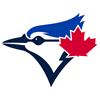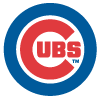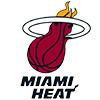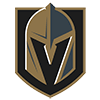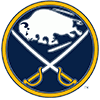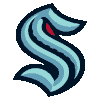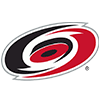Continuing my series of general research pieces to pass the time while we wait for a steady stream of baseball news to arrive, this week's introduction will look at the value of top-tier catchers.
I'm a big fan of using projection systems and auction calculators as part of my draft preparation. While I'm certainly not a slave to our robot overlords, I turn to them frequently as a check on my intuitions. Sure, much of the skill in being a good fantasy owner comes in identifying players who will beat their projections, but there's also an undeniable echo chamber involved in fantasy analysis. Looking at what a computer program that's never read a single fantasy article thinks can be quite useful for offsetting our collective biases.
One thing I've noticed as a recurring theme with auction calculators is that they universally seem to think we should be drafting the top catchers higher than we typically do. Are we collectively biased against catchers as drafters? Sure, they definitely produce at a lower rate than the other hitters we could grab at the same slot, but are we perhaps underestimating just how low the floor is at the position?
To get a clearer sense of whether I should agree with the calculators on this issue, I considered a roster with, say, J.T. Realmuto at pick 46 (his NFBC ADP since the start of March) versus one of the top non-catcher hitters typically available at that spot. Since you have to pick up
Continuing my series of general research pieces to pass the time while we wait for a steady stream of baseball news to arrive, this week's introduction will look at the value of top-tier catchers.
I'm a big fan of using projection systems and auction calculators as part of my draft preparation. While I'm certainly not a slave to our robot overlords, I turn to them frequently as a check on my intuitions. Sure, much of the skill in being a good fantasy owner comes in identifying players who will beat their projections, but there's also an undeniable echo chamber involved in fantasy analysis. Looking at what a computer program that's never read a single fantasy article thinks can be quite useful for offsetting our collective biases.
One thing I've noticed as a recurring theme with auction calculators is that they universally seem to think we should be drafting the top catchers higher than we typically do. Are we collectively biased against catchers as drafters? Sure, they definitely produce at a lower rate than the other hitters we could grab at the same slot, but are we perhaps underestimating just how low the floor is at the position?
To get a clearer sense of whether I should agree with the calculators on this issue, I considered a roster with, say, J.T. Realmuto at pick 46 (his NFBC ADP since the start of March) versus one of the top non-catcher hitters typically available at that spot. Since you have to pick up a catcher or two eventually, I compared a roster with Realmuto and the average reserve-round hitter (picks 346 to 450 in a 15-team league with 30-man rosters) to a team with one of the next five hitters available at Realmuto's spot and a reserve-round catcher. Here's what I found, using numbers pulled from ATC, my go-to projection system:
| Group | AVG | R | RBI | HR | SB |
|---|---|---|---|---|---|
| Realmuto & Reserve-Round Hitter | .265 | 137.6 | 133.2 | 38.1 | 12.8 |
| Non-C Hitter at Pick 46 & Reserve-Round C | .257 | 129.2 | 120.1 | 37.7 | 11.2 |
| Difference | .008 | 8.4 | 13.1 | 0.4 | 1.6 |
It sure looks like drafters who grab Realmuto in the early third round get more total value than those who grab a non-catcher (George Springer, Matt Olson, Kris Bryant, Bo Bichette and Whit Merrifield in this case) at that spot and wait to take a catcher later. The Realmuto-led pairing leads in every category, with particularly notable leads in runs and RBI. That suggests the drop-off to the bargain-bin catchers is steeper than the drop-off to the almost-free hitters at other positions.
Is this unique to Realmuto, or do the rest of the top-tier catchers show the same trend? Here are the numbers for the rest of the top-five catchers:
| Group | AVG | R | RBI | HR | SB |
|---|---|---|---|---|---|
| Gary Sanchez & Reserve-Round Hitter | .248 | 121.6 | 131.2 | 45.1 | 5.8 |
| Non-C at Pick 82 & Reserve-Round C | .253 | 122.4 | 123.1 | 39.9 | 6.6 |
| Difference | -.005 | -0.8 | 8.1 | 5.2 | -0.6 |
| Yasmani Grandal & Reserve-Round Hitter | .248 | 125.6 | 127.2 | 39.1 | 8.8 |
| Non-C Hitter at Pick 98 & Reserve-Round C | .249 | 118.6 | 126.9 | 39.1 | 5.8 |
| Difference | -.001 | 7.0 | 0.3 | 0.0 | 3.0 |
| Mitch Garver & Reserve-Round Hitter | .256 | 118.6 | 117.2 | 36.1 | 5.8 |
| Non-C Hitter at Pick 114 & Reserve-Round C | .250 | 118.4 | 120.9 | 36.7 | 9.6 |
| Difference | .006 | 0.2 | -3.7 | -0.6 | -3.8 |
| Willson Contreras & Reserve-Round Hitter | .258 | 116.6 | 122.2 | 36.1 | 7.8 |
| Non-C Hitter at Pick 114 & Reserve-Round C | .250 | 118.4 | 120.9 | 36.7 | 9.6 |
| Difference | .008 | 1.8 | 1.3 | -0.6 | -1.8 |
These catchers don't sweep the categories the way Realmuto does, but on the whole, taking the catcher over the next-best hitter seems to be the right move. The pairings led by Grandal and Contreras each win the majority of the five standard categories. Sanchez's pairing leads in just two of the five, but his leads in those categories are significantly larger than his deficits in the other three. For Garver, picking him seems like the wrong move, but it's certainly believable that a projection system would be ill-equipped to handle a sudden breakout such as his.
To check whether the computer-driven projections were systematically overvaluing catchers for some unclear reason, I repeated the exercise using my favorite human-run projections, namely those carried by a certain RotoWire.com. (You might have heard of them.) Here are the results:
| Group | AVG | R | RBI | HR | SB |
|---|---|---|---|---|---|
Realmuto & Reserve-Round Hitter vs. Different Hitter & Reserve-Round C | .004 | 14.0 | 13.8 | 0.3 | 0.9 |
Sanchez & Reserve-Round Hitter vs. Different Hitter & Reserve-Round C | -.013 | 8.6 | 19.0 | 8.1 | 1.1 |
Grandal & Reserve-Round Hitter vs. Different Hitter & Reserve-Round C | .001 | 8.2 | -2.6 | 2.5 | 4.5 |
Garver & Reserve-Round Hitter vs. Different Hitter & Reserve-Round C | .008 | 8.4 | 4.6 | 3.1 | -2.5 |
Contreras & Reserve-Round Hitter vs. Different Hitter & Reserve-Round C | .008 | -0.6 | 4.6 | 3.1 | -0.5 |
Using our human-made projections shows an even bigger advantage for the elite catchers. Each catcher-led pairing wins at least three of the five categories, with all but Contreras winning at least four. Apparently humans (at least the ones running our projections) are even more optimistic about the elite group of catchers than the computers are, yet humans as a whole consistently take the top catchers later than the computers say we should.
The drop-off between the elite catchers and the catchers available late in the draft is just so large, while the much larger pool of players to draw from at other positions means there are more viable options from which to choose. I'm much happier going for a top-five catcher and taking whatever late flyers I like in the reserve rounds at other offensive positions, rather than grabbing an extra elite infielder or outfielder early while hoping I can come out of the reserve rounds with a catcher I'm happy with. (Is anyone truly happy with Tucker Barnhart?)
Do these numbers back up your intuitions about catchers? Or are you afraid enough of the injury risk inherent in the position that you'll continue waiting on catcher as long as possible? Let me know in the comments. For now, back to our regularly scheduled programming with the thin amount of news that's come through the wire in the last week.
RISERS
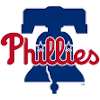 Andrew McCutchen, OF, Phillies: McCutchen was having a fine first season in Philadelphia, hitting .256/.378/.457 with 10 homers through 59 games, before tearing his ACL in early June. He was ruled out for the originally scheduled Opening Day in late February but will wind up as one of many beneficiaries of the delayed start to the campaign. He confirmed Friday that he'll be ready to go whenever the season eventually begins. There's undeniably some risk that comes with drafting a 33-year-old who's coming off a major injury, but there's plenty of upside in a player who gets to hit in front of Bryce Harper and play half of his games at Citizens Bank Park. The veteran hadn't shown much sign of aging prior to the injury, either, rebounding from a disappointing 2016 campaign to post a consistent wRC+ of 122, 121 and 120 in the last three seasons.
Andrew McCutchen, OF, Phillies: McCutchen was having a fine first season in Philadelphia, hitting .256/.378/.457 with 10 homers through 59 games, before tearing his ACL in early June. He was ruled out for the originally scheduled Opening Day in late February but will wind up as one of many beneficiaries of the delayed start to the campaign. He confirmed Friday that he'll be ready to go whenever the season eventually begins. There's undeniably some risk that comes with drafting a 33-year-old who's coming off a major injury, but there's plenty of upside in a player who gets to hit in front of Bryce Harper and play half of his games at Citizens Bank Park. The veteran hadn't shown much sign of aging prior to the injury, either, rebounding from a disappointing 2016 campaign to post a consistent wRC+ of 122, 121 and 120 in the last three seasons.
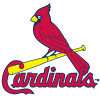 Miles Mikolas, SP, Cardinals: A sore flexor tendon popped up for Mikolas early in camp, sending him plummeting down draft boards. He's been throwing for several weeks now following a platelet-rich plasma injection and hasn't appeared to have suffered any setbacks. He was slated to miss roughly a month before play was paused, but it now seems quite likely that he won't miss any time. Again, there's plenty of risk in drafting a veteran who's already dealt with an arm injury this season, but Mikolas is at least worth considering again. Just how much consideration even a fully healthy Mikolas deserves is up for debate, however. His one elite skill, his walk rate (which came in at 4.2 percent last season), shows up only indirectly as part of his WHIP, and you're all but guaranteed to take a loss from his mediocre 18.9 percent strikeout rate. Drafting him, therefore, means you're hoping for some good luck in his win total and ERA in addition to his arm staying healthy. Still, he's a riser because that's now at least a gamble worth considering.
Miles Mikolas, SP, Cardinals: A sore flexor tendon popped up for Mikolas early in camp, sending him plummeting down draft boards. He's been throwing for several weeks now following a platelet-rich plasma injection and hasn't appeared to have suffered any setbacks. He was slated to miss roughly a month before play was paused, but it now seems quite likely that he won't miss any time. Again, there's plenty of risk in drafting a veteran who's already dealt with an arm injury this season, but Mikolas is at least worth considering again. Just how much consideration even a fully healthy Mikolas deserves is up for debate, however. His one elite skill, his walk rate (which came in at 4.2 percent last season), shows up only indirectly as part of his WHIP, and you're all but guaranteed to take a loss from his mediocre 18.9 percent strikeout rate. Drafting him, therefore, means you're hoping for some good luck in his win total and ERA in addition to his arm staying healthy. Still, he's a riser because that's now at least a gamble worth considering.
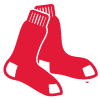 Alex Verdugo, OF, Red Sox: Verdugo's status had been somewhat up in the air as he works his way back from both a stress fracture in his back and a strained oblique. He had resumed swinging shortly before play was shut down, though he didn't have anything close to a clear timeline to return at that time. General manager Chaim Bloom finally gave an update last week that Verdugo is "coming along well" in his recovery. There's still no clear timeline, but that optimism is good enough to earn the young outfielder a spot as a riser this week. The Red Sox haven't officially confirmed that he won't miss any time, so he's not yet completely risk free, but it certainly appears as though he has a good shot to be back when play resumes. The chance to land a highly rated young hitter who could bat near the top of a still-strong Boston lineup will be hard to pass up if his price remains low.
Alex Verdugo, OF, Red Sox: Verdugo's status had been somewhat up in the air as he works his way back from both a stress fracture in his back and a strained oblique. He had resumed swinging shortly before play was shut down, though he didn't have anything close to a clear timeline to return at that time. General manager Chaim Bloom finally gave an update last week that Verdugo is "coming along well" in his recovery. There's still no clear timeline, but that optimism is good enough to earn the young outfielder a spot as a riser this week. The Red Sox haven't officially confirmed that he won't miss any time, so he's not yet completely risk free, but it certainly appears as though he has a good shot to be back when play resumes. The chance to land a highly rated young hitter who could bat near the top of a still-strong Boston lineup will be hard to pass up if his price remains low.
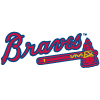 Austin Riley, OF, Braves: Riley had been in a tough battle with Johan Camargo to be the Braves' Opening Day third baseman. His stock took a hit in camp when reports came out that he was considered the underdog and that the Braves weren't likely to carry the loser of the battle on the 26-man roster. General manager Alex Anthopoulos indicated Friday, however, that the team has seriously considered carrying both players. If Riley does indeed crack the roster when play resumes, he'll have the chance to carve out a larger role with some strong early performances. An up-and-down rookie season saw him hit a strong 18 homers in 80 games, but that came with an 86 wRC+ and a lopsided .226/.279/.471 slash line. His combination of a 36.4 percent strikeout rate and a 5.4 percent walk rate is far from promising, but it also indicates room for growth if he can just get his plate discipline under control. His respectable 25.4 percent strikeout rate and 8.3 percent walk rate over the course of his minor-league career suggests he shouldn't be quite so bad in those categories moving.
Austin Riley, OF, Braves: Riley had been in a tough battle with Johan Camargo to be the Braves' Opening Day third baseman. His stock took a hit in camp when reports came out that he was considered the underdog and that the Braves weren't likely to carry the loser of the battle on the 26-man roster. General manager Alex Anthopoulos indicated Friday, however, that the team has seriously considered carrying both players. If Riley does indeed crack the roster when play resumes, he'll have the chance to carve out a larger role with some strong early performances. An up-and-down rookie season saw him hit a strong 18 homers in 80 games, but that came with an 86 wRC+ and a lopsided .226/.279/.471 slash line. His combination of a 36.4 percent strikeout rate and a 5.4 percent walk rate is far from promising, but it also indicates room for growth if he can just get his plate discipline under control. His respectable 25.4 percent strikeout rate and 8.3 percent walk rate over the course of his minor-league career suggests he shouldn't be quite so bad in those categories moving.
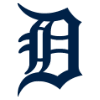 Cameron Maybin, OF, Tigers: Did I mention we're scraping the bottom of the barrel? Maybin is hardly an exciting option, as evidenced by his NFBC ADP of 647.6, but the report over the weekend that he would have been the Tigers' leadoff hitter on Opening Day means he's probably worth at least a reserve-round flyer. Even in a lineup as weak as the Tigers', the leadoff spot definitely boosts a player's fantasy value, as it comes with added plate appearances and more chances to score. The fact that Maybin was penciled in as the leadoff man also presumably indicates that the Tigers expect him to play regularly, something which previously hadn't been entirely clear. The veteran did manage a surprisingly strong .285/.364/.494 line with 11 homers and nine steals in 269 plate appearances for the Yankees last season, though it took a .365 BABIP to get him there, and he's in line for a considerable drop in the quality of his home park as well as the lineup around him.
Cameron Maybin, OF, Tigers: Did I mention we're scraping the bottom of the barrel? Maybin is hardly an exciting option, as evidenced by his NFBC ADP of 647.6, but the report over the weekend that he would have been the Tigers' leadoff hitter on Opening Day means he's probably worth at least a reserve-round flyer. Even in a lineup as weak as the Tigers', the leadoff spot definitely boosts a player's fantasy value, as it comes with added plate appearances and more chances to score. The fact that Maybin was penciled in as the leadoff man also presumably indicates that the Tigers expect him to play regularly, something which previously hadn't been entirely clear. The veteran did manage a surprisingly strong .285/.364/.494 line with 11 homers and nine steals in 269 plate appearances for the Yankees last season, though it took a .365 BABIP to get him there, and he's in line for a considerable drop in the quality of his home park as well as the lineup around him.
FALLERS
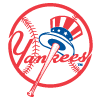 Brett Gardner, OF, Yankees: The Yankees, who entered the season as again one of the most injured teams in the league, are in position to benefit from the delayed season. Unfortunately for players like Gardner, that benefit takes the form of other players potentially stealing their jobs. Giancarlo Stanton is already deemed fully healthy, having recovered from a quadriceps injury, and Aaron Judge looks to have a good chance to be back from the stress fracture in his ribs by the time play resumes. If the season is pushed back enough, Aaron Hicks will enter the picture as well. He's expected to be ready to go sometime in June or July after recovering from Tommy John surgery and could start ahead of Gardner in center. That trio should handle two outfield spots and the designated hitter spot between them on most days, leaving Gardner fighting with Mike Tauchman and Clint Frazier for at-bats. Gardner should still play fairly often, as Stanton, Judge and Hicks are hardly bastions of health, but his stock definitely takes a hit due to the increased competition.
Brett Gardner, OF, Yankees: The Yankees, who entered the season as again one of the most injured teams in the league, are in position to benefit from the delayed season. Unfortunately for players like Gardner, that benefit takes the form of other players potentially stealing their jobs. Giancarlo Stanton is already deemed fully healthy, having recovered from a quadriceps injury, and Aaron Judge looks to have a good chance to be back from the stress fracture in his ribs by the time play resumes. If the season is pushed back enough, Aaron Hicks will enter the picture as well. He's expected to be ready to go sometime in June or July after recovering from Tommy John surgery and could start ahead of Gardner in center. That trio should handle two outfield spots and the designated hitter spot between them on most days, leaving Gardner fighting with Mike Tauchman and Clint Frazier for at-bats. Gardner should still play fairly often, as Stanton, Judge and Hicks are hardly bastions of health, but his stock definitely takes a hit due to the increased competition.
 Jonathan Loaisiga, SP/RP, Yankees: Loaisiga is another Yankee whose value takes a knock due to the presumed return of his teammates. He had seemed to have a good shot at a starting role in the absence of Luis Severino (elbow), Domingo German (suspension) and James Paxton (back), but the delayed season should give Paxton a good shot to not miss any time. Teams need more than five starters to get through the typical season, so Loaisiga should still be in line for a handful of starts, but he's harder to draft if he isn't in the rotation to begin the campaign. He's certainly an intriguing arm if an opportunity reopens, however, as his 4.79 ERA in 56.1 career big-league innings hides a 3.78 xFIP. With a strong 28.3 percent strikeout rate, he remains an interesting sleeper, albeit a deeper one than he was a month ago.
Jonathan Loaisiga, SP/RP, Yankees: Loaisiga is another Yankee whose value takes a knock due to the presumed return of his teammates. He had seemed to have a good shot at a starting role in the absence of Luis Severino (elbow), Domingo German (suspension) and James Paxton (back), but the delayed season should give Paxton a good shot to not miss any time. Teams need more than five starters to get through the typical season, so Loaisiga should still be in line for a handful of starts, but he's harder to draft if he isn't in the rotation to begin the campaign. He's certainly an intriguing arm if an opportunity reopens, however, as his 4.79 ERA in 56.1 career big-league innings hides a 3.78 xFIP. With a strong 28.3 percent strikeout rate, he remains an interesting sleeper, albeit a deeper one than he was a month ago.
 Jay Bruce, OF, Phillies: The flip side of the good news for Andrew McCutchen is bad news for Bruce. Bruce had been in line for at least a temporary starting role in left field but is reduced to a bench bat with McCutchen's return. He could steal the occasional start from McCutchen in left or Rhys Hoskins at first base against righties, but it will take an injury somewhere for him to play often enough to matter in most fantasy leagues. If that does happen, he's a useful enough cheap option, at least in formats that don't use on-base percentage. He posted an awful .261 mark in that category last season, but his 26 homers in 333 plate appearances indicate that he can at least help fantasy owners in one category.
Jay Bruce, OF, Phillies: The flip side of the good news for Andrew McCutchen is bad news for Bruce. Bruce had been in line for at least a temporary starting role in left field but is reduced to a bench bat with McCutchen's return. He could steal the occasional start from McCutchen in left or Rhys Hoskins at first base against righties, but it will take an injury somewhere for him to play often enough to matter in most fantasy leagues. If that does happen, he's a useful enough cheap option, at least in formats that don't use on-base percentage. He posted an awful .261 mark in that category last season, but his 26 homers in 333 plate appearances indicate that he can at least help fantasy owners in one category.











